For many students, the dream of becoming a pilot begins with a sense of wonder – watching aircraft soar overhead, visiting an airshow, or taking a discovery flight. But for most, the excitement is quickly followed by a sobering question: How can I afford flight training?
It’s true – earning a pilot’s license can be expensive. A typical private pilot certificate can cost anywhere from $10,000 to $15,000, and additional ratings or professional training can quickly add to these costs. However, aspiring aviators shouldn’t let cost stand in the way of their goals. There are more opportunities than ever before for motivated students to find financial support.
Below are several practical ways students can begin working toward financing their flight training – from flight training scholarships and part-time work to creative fundraising and community partnerships.
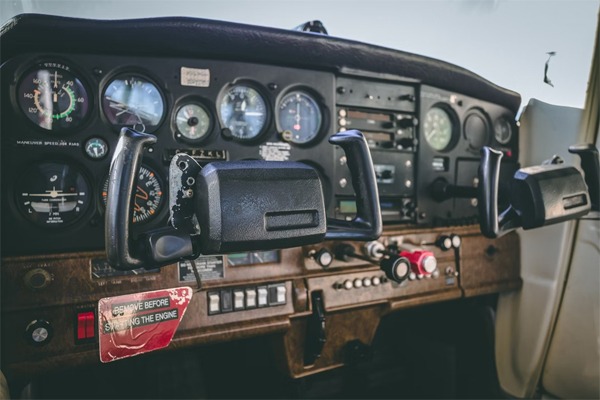
Flight Training Scholarships
One of the best ways for students to offset flight training costs is through aviation scholarships – much like DreamFlight’s own Flight Training Scholarship opportunity. Numerous organizations, both local and national, offer scholarships for aspiring students, with many specifically targeting high school-aged students.
AOPA Foundation Scholarships
The Aircraft Owners and Pilots Association (AOPA) offers high school flight training scholarships ranging from $2,500 to $10,000 for students aged 15-18. Applicants must be in active aviation-related programs, such as a school aviation club or STEM program.
EAA Young Eagles & Flight Training Scholarships
Students who have participated in an EAA Young Eagles flight are eligible for special flight training scholarships through the Experimental Aircraft Association. These Awards help students continue their journey toward earning their pilot’s license.
Women in Aviation International (WAI) Scholarships
Open to both high school and college-age women, WAI offers more than 100 scholarships annually for flight training, maintenance, and aviation management.
Ninety-Nines Scholarships
Similar to WAI, The Ninety-Nines International Organization of Women Pilots offers a wide range of awards for all levels of flight training.
While there are plenty of organizations that offer financial means for flight training, be prepared to put in a little work. These scholarships often require students to submit an essay, recommendation letters, and academic transcripts – but the effort is well worth it. Many students find that applying for multiple opportunities can yield several thousand dollars toward their training.
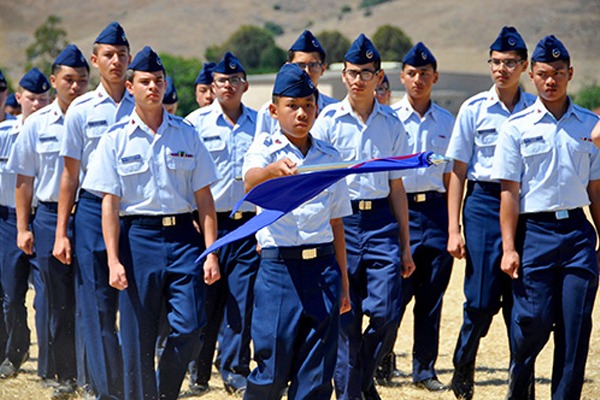
Local Aviation Organizations & Clubs
Beyond national programs, students should also look locally. Many communities have aviation organizations eager to help young people get their start.
EAA Chapters often sponsor local flight training scholarships or offer reduced-rate flight lessons.
Civil Air Patrol (CAP) offers cadets the opportunity to receive orientation flights and event flight training scholarships for those who excel in their program.
Local airports or flying clubs may provide discounted training rates for members, and some fixed-base operators (FBOs) offer work-trade programs where students can help around the hangar in exchange for flight time.
If you live near a general aviation airport, take time to introduce yourself to flight instructors and airport managers. Express your interest in aviation and ask if they know of any local opportunities for youth flight training support. You might be surprised how many people in the aviation community want to help new pilots succeed.
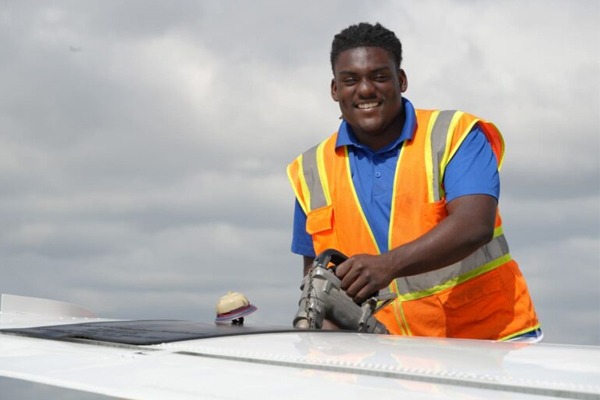
Part-Time Jobs & Work-Trade Opportunities
Working part-time – even in a non-aviation job – can help cover the cost of flight training over time. Positions such as lifeguarding, tutoring, or working in retail can teach valuable time management and responsibility while building savings for lessons.
However, there are also aviation-related work opportunities that can pay off in more ways than one. Some flight schools and airports offer work-trade programs where students can assist with administrative tasks, aircraft washing, fueling, or ramp operations in exchange for discounted flight time. These programs not only save money but also provide hands-on exposure to the aviation environment.
Students can also look into internships through local airports, aviation maintenance facilities, or programs like DreamFlight’s OpenSkies Flight Club, where students gain experience while connecting with mentors in aviation careers.

Fundraising & Crowdfunding Efforts
School aviation programs and other supporting organizations often utilize creative fundraising to make a difference. From small community efforts to online campaigns, motivated students can rally support collectively to support their aviation goals.
Community Fundraisers
Host a car wash, bake sale, or trivia night to raise funds toward your flight training. Partnering with a local organization (like a church, 4-H club, or Rotary group) can often increase turnout and donations.
Crowdfunding Platforms
Sites like GoFundMe or Givebutter can help share your story widely. Make your campaign personal – explain why you’re passionate about aviation, your career goals, and how funds will be used responsibly.
Sponsor Partnerships
Local businesses often support youth pursuing unique career paths. Aviation programs and other organizations can offer various levels of recognition in exchange for sponsorship.
Many donors enjoy investing in motivated young people who are actively pursuing their dreams – and aviation offers a clear, inspiring goal for supporters to rally behind.
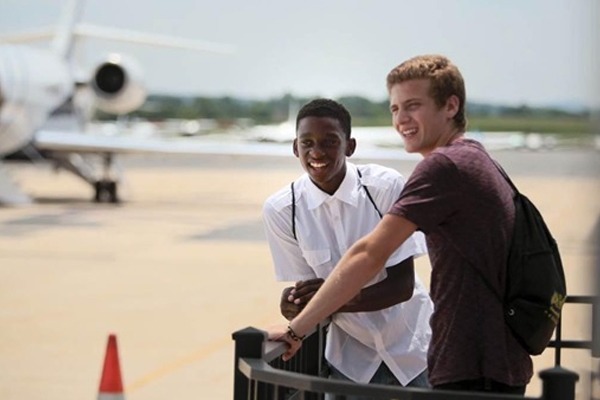
High School Aviation Programs& Dual Credit Options
Some high schools and technical centers now partner with aviation organizations or colleges to provide aviation coursework, simulator access, or even flight instruction at reduced costs.
Students should check if their district offers a career and technical education (CTE) pathway in aviation or aerospace. These programs may include partnerships with local flight schools that provide discounted instruction or credit toward a Private Pilot License.
For example, dual credit programs allow students to earn both high school and college credit for aviation courses, reducing future college costs while providing early exposure to flight training.
Students can also join organizations and school programs that utilize the AOPA High School Aviation STEM Curriculum, which connects schools and students with resources, mentors, and potential flight training opportunities.
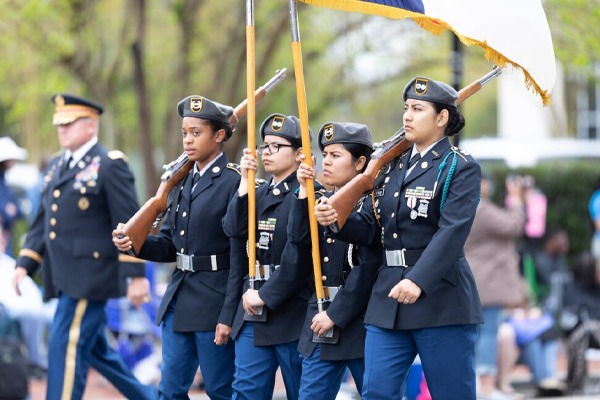
ROTC & Military Pathways
For students interested in aviation careers with a service component, military programs can provide both training and funding opportunities.
High school students can participate in Junior ROTC aviation programs or Civil Air Patrol, both of which offer flight training scholarships. Upon graduation, students can also explore college ROTC programs or direct enlistment options that provide aviation experience and education benefits.
Even if a student doesn’t plan on a long-term military career, these programs often provide access to leadership training, scholarships, and flight experience that can translate into civilian aviation opportunities later on.
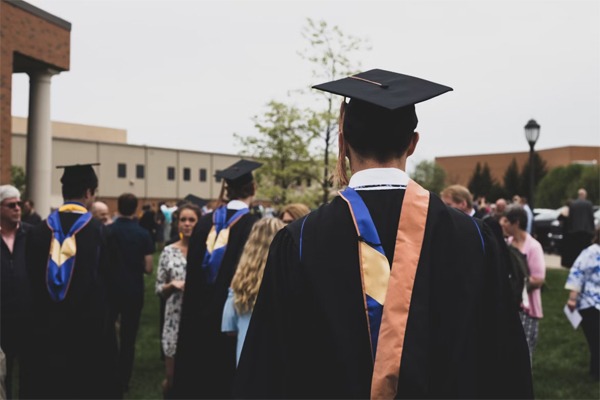
Grants & Financial Aid ThroughColleges & Universities
Students planning to pursue aviation in college should research universities with flight programs. Many aviation schools offer institutional scholarships and grants specifically for incoming students pursuing professional pilot degrees.
Programs such as those offered by the Embry-Riddle Aeronautical University, Purdue University, and Eastern Kentucky University often include merit-based scholarships or need-based aid that can significantly reduce overall costs.
Even if you begin your flight training before college, many institutions will allow transfer credit or may even often reimbursement for prior training.

Building a Long-Term Financial Plan
Lastly, students should approach aviation training with a plan. Flight training is not something that has to be completed all at once – it can spread over months or even years, depending on your budget.
Start with a discovery flight to confirm your passion for flying, then set savings goals for each training milestone: ground school, solo, cross-country, and final checkride. Many flight schools allow students to pay per lesson or offer block rates, saving you more in the long run. It’s up to you to determine which makes it easier to budget for financially. Keeping a flight training log and budget tracker can help visualize progress and motivate continued saving.
While Flight Training can seem financially daunting, students today have more tools, resources, and opportunities than ever to make it attainable. Through scholarships, part-time work, community programs, and other means of creative fundraising, many students have successfully earned their wings before college.
At DreamFlight Charities, we believe that aviation should be accessible to everyone – regardless of background or income. By connecting students with mentorship, scholarships, and education opportunities, we’re helping the next generation of aviators turn their dreams into flight plans.
If you’re ready to take your first step, start exploring scholarships and local programs today – and remember, every great pilot once stood where you are now: dreaming of flight, and determined to make it happen.

